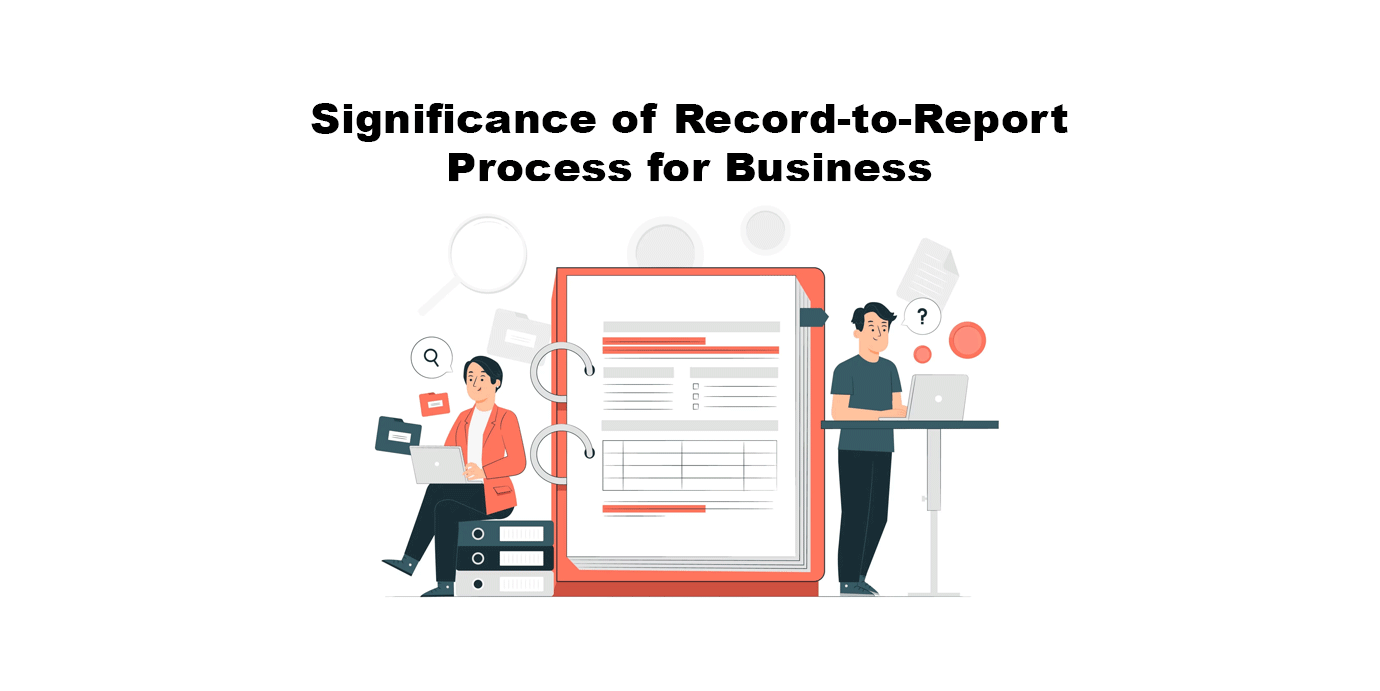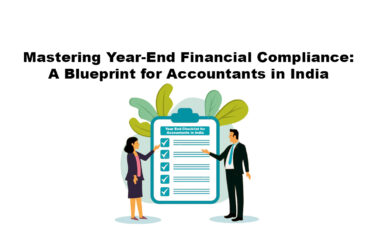What is Record-to-Report (R2R)?
Record-to-Report (R2R) is the backbone of any company’s or business’s Financial Management. It is the management of Finance and Accounting process that involves collecting, processing, and presenting financial information in the form of documents that are used by the management to perform analysis and review. It ensures accuracy, compliance, and provides valuable insights that drive decision-making, assess performance, and maintain trust among stakeholders.
Many organizations appoint professionals to handle R2R process. Their responsibilities are essential for maintaining financial accuracy, compliance, and informed decision-making.
Below are the Steps Involved in Record-to-Report Process:
- Data Collection: Collection of invoices, purchase orders, statements etc.
- Data Entry: Recording the transactions in the accounting software in timely manner.
- Reconciliation: Matching with other reports to ensure errors are tracked and resolved.
- Closing the Books: Preparation of workings for prepaid / provision entries, foreign exchange fluctuations, depreciation etc. as per the accounting principles.
- Financial Reporting: Preparation of reports such as balance sheet, Profit & Loss A/c, cash flow statement, financial budgets etc.
- Financial analysis: Analyzing and building reports highlighting the key insights about financial adequacy and the business’s overall performance.
- Decision-Making: Making the informed decisions.
- Tax and Regulatory Compliance: Furnishing information or returns under various laws.
Find Below the Several Reasons why Record to Report (R2R) Process is Crucial for Business:
- Financial Transparency: R2R ensures that all financial transactions are accurately recorded. This transparency helps in identifying any discrepancies or errors. For example, if a company mistakenly records a transaction twice, the R2R process can catch and correct this error.
- Compliance: Many industries and jurisdictions have strict financial reporting requirements and regulations. R2R ensures that a company complies with these regulations.
- Decision-Making: Company leaders rely on R2R reports to make informed decisions. For example, if a branch sees a drop in sales through R2R analysis, they can decide to adjust their business strategy accordingly.
- Performance Evaluation: R2R helps in assessing a company’s financial performance over time. For instance, a manufacturer might use R2R reports to track the profitability of different products, helping them decide which ones to invest in and which ones to phase out.
- Budgeting and Forecasting: Businesses use historical R2R data to create budgets and forecasts. For example, a company may analyze its past R2R reports to project future expenses as they plan to expand their operations.
- Investor Confidence: Investors, shareholders, and potential partners often review R2R reports to gauge the financial health of a company. If a startup can show consistent revenue growth through R2R reports, it can attract more investment.
- Risk Management: R2R helps in identifying financial risks. For instance, a bank analyzing its R2R data might notice a trend of increasing non-performing loans, prompting them to adjust their lending practices.
Even though Record-to-Report Process is Useful, Below Mentioned are Some of the Challenges Associated with it:
- Data Accuracy and Integrity: It can be onerous to consolidate financial data accurately from various sources, especially when dealing with different currencies and accounting standards.
- Complexity of Financial Regulations: Compliance with ever-evolving financial regulations, such as International Financial Reporting Standards (IFRS), can be daunting. Companies often need to invest in specialized expertise to navigate these complexities successfully.
- Data Security and Privacy: With the increasing emphasis on data security and privacy (e.g., GDPR), companies must ensure that sensitive financial data is protected. A data breach can result in severe legal and reputational consequences.
- Change Management: Implementing new R2R processes or technology can face resistance from employees who are accustomed to old methods. Ensuring a smooth transition and buy-in from staff can be challenging.
- Technology Challenges: Some organizations still rely on outdated accounting systems that may not integrate well with modern tools or support real-time data reporting. This can lead to inefficiencies and delays in the R2R process.
- Volume of Data: In industries like e-commerce and banking, where there are thousands of transactions per minute, managing and processing data swiftly for the R2R process can be overwhelming without the right systems and automation in place.
- Human Error: Manual data entry and reconciliation are prone to errors. For instance, a simple human error in a financial statement can lead to incorrect financial reporting, potentially impacting investor confidence.
- Resource Constraints: Smaller companies may lack the resources to hire a dedicated team for R2R or invest in sophisticated accounting software, making it challenging to maintain a robust R2R process.
- Timeliness of Reporting: Timely reporting of financial information is very crucial. Delays in closing the books or reconciling accounts can result in non-compliance and financial penalties.
It is true that the quality of inputs and process determines the quality of output. The R2R process ensures that quality checks are performed at the level of collecting inputs and while recording the same so that meaningful reports can be generated for decision making. The R2R process is essential for maintaining financial integrity, regulatory compliance, and informed decision-making within organizations. It ensures that financial data is accurate, transparent, and reliable, which is crucial for building trust among stakeholders and sustaining the long-term success of the organization.





